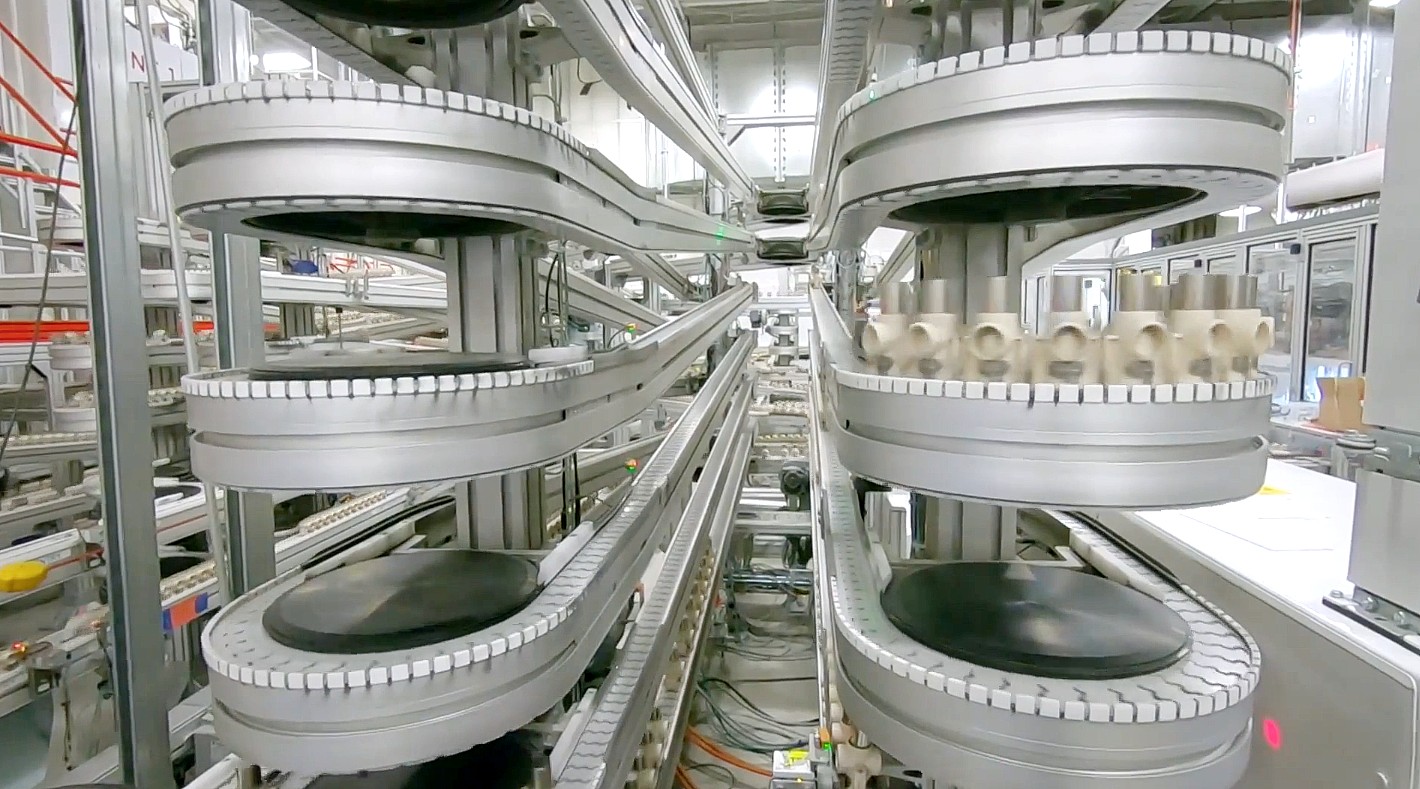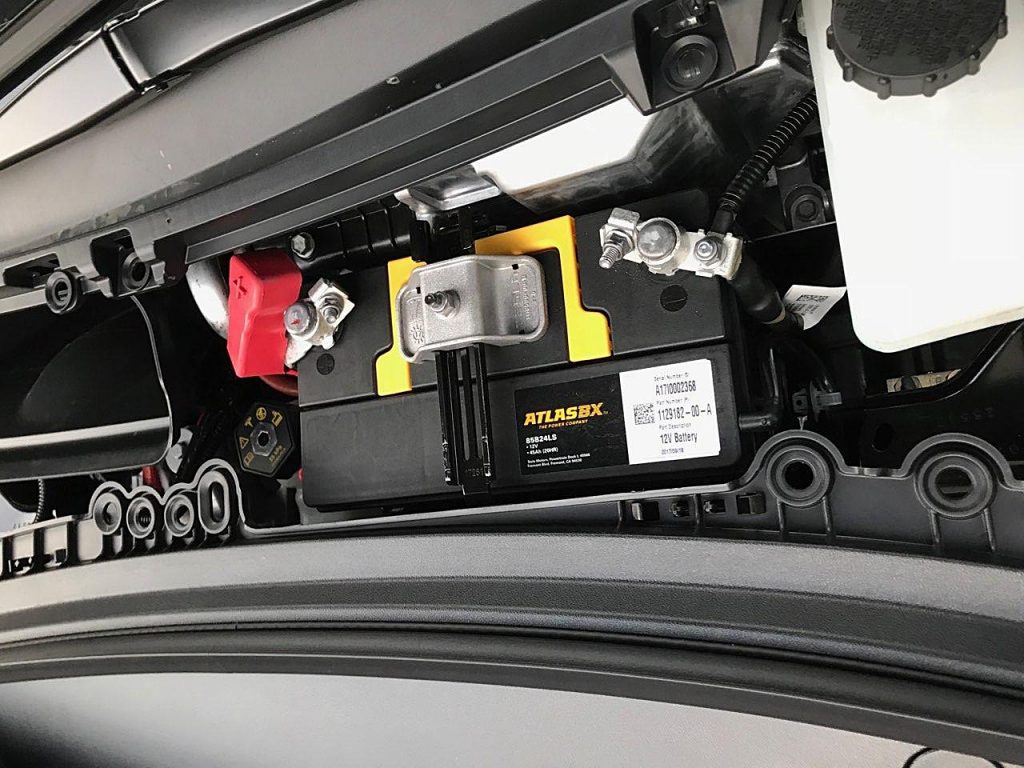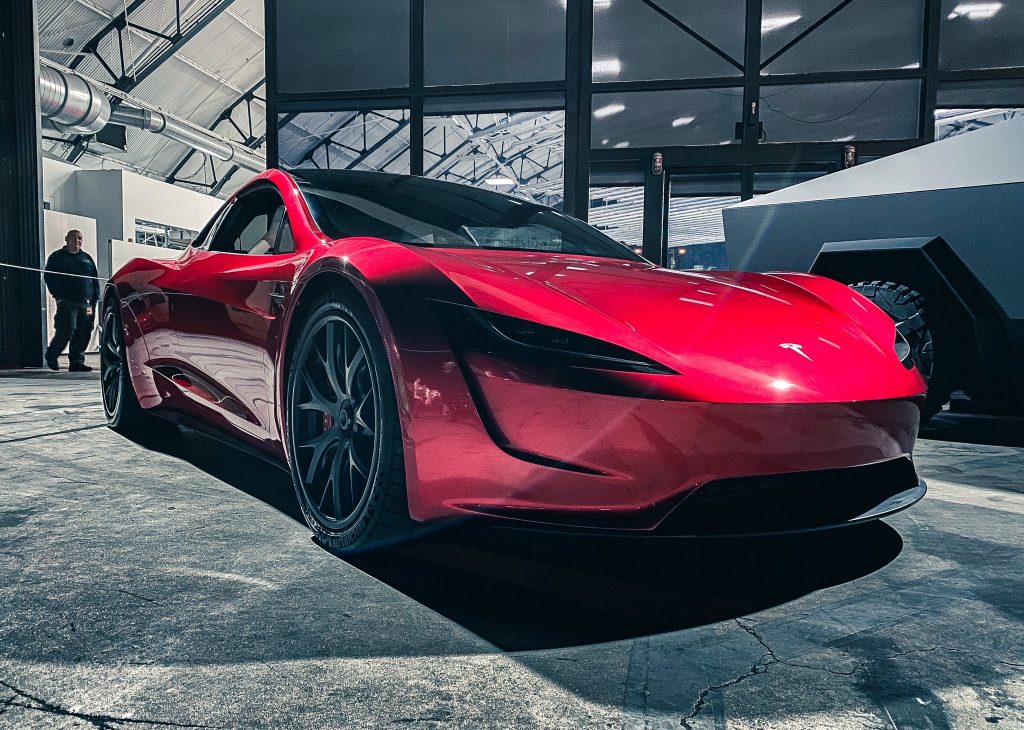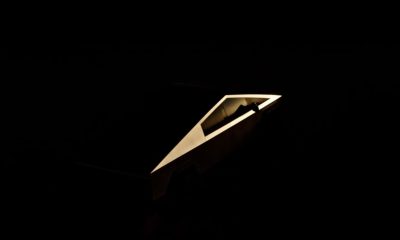

News
Tesla can solve an annoying part of its cars’ ownership experience with Maxwell’s supercapacitors
When Tesla acquired Maxwell technologies, the electric vehicle community was appropriately excited. Maxwell, after all, works on projects such as dry battery electrode tech and supercapacitors, both of which are believed to hold a lot of potential in the emerging electric vehicle sector. But as the countdown to the highly-anticipated Battery Day draws near, speculations suggest that Tesla acquired Maxwell mainly due to the company’s dry battery electrode tech, not its supercapacitors. Yet according to Andrey Shigaev, CEO of Geyser Batteries, supercapacitors still hold some potential uses for Tesla’s electric cars.
In a brief interview with Teslarati, Shigaev, whose company is developing batteries that use aqueous (water-based) electrolytes, noted that while supercapacitors will likely not be involved in Tesla’s million-mile battery project, there are already a lot of local tasks in an electric vehicle that could benefit from the use of supercapacitors. Among these is smart air suspension, a feature that is currently used in the Model S and X and is expected for upcoming vehicles like the Cybertruck. But beyond this, the Geyser Batteries CEO mentioned that supercapacitors could also be utilized as a superior alternative to the 12V battery that Tesla uses for its vehicles today.
“The more stuff gets electrified, the more power you need to perform tasks. The most classical thing (that could benefit from supercapacitors) and the number one item for Tesla is the 12V battery. Supercapacitors can handle this task. If you have a high energy battery onboard, then this secondary circuit could be powered by a supercapacitor that is very efficient. It will even have an extremely long life cycle. Supercapacitors are lighter too, saving weight. And they tend to be smaller than a lead-acid battery,” Shigaev said.

Interestingly enough, the earliest versions of the original Tesla Roadster didn’t use a 12V battery. Instead, the company used a portion of the Roadster’s main lithium-ion battery pack to supply 12V for the vehicles’ accessories and lights. This did not prove ideal, however, and in 2010, Tesla switched to using a 12V battery for the Roadster 2.0. It should be noted that the 12V battery, which has been adopted in every vehicle since the Roadster 2.0, is used to keep systems such as emergency blinkers, airbags, seatbelt pre-tensioners, the MCU, and other functions operational even when a car’s main battery pack is compromised.
Being one of the few parts of the car that is still based on conventional automotive tech, the 12V battery in a Tesla tends to last only a few years. As noted by Tesla Tap, the 12V battery in a brand new Tesla could last about 3-4 years, but this could be reduced to as little as 1-2 years if the vehicle is driven frequently. This could cause annoyances among Tesla owners, especially since the 12V battery’s health could not be actively observed in the vehicle’s systems yet. Social media posts about 12V batteries in Teslas giving out are numerous, with some owners noting that it is the one aspect of the Tesla ownership experience that is still mildly infuriating.
With this in mind, the use of supercapacitors in place of the 12V battery could be pretty in-character for Tesla. Nevertheless, the Geyser CEO explained that using supercapacitors in place of the 12V battery would present some challenges as well. Among these is cost, since supercapacitors are notably more expensive than standard 12V lead-acid batteries. Yet despite this, the advantages they bring could justify their use, especially among flagship vehicles like the next-generation Roadster and the Plaid Model S and Model X.

“Supercapacitors have a main caveat. There are three drawbacks. First and foremost is energy density, which is ten times lower than lead-acid battery. Second is their price since currently, their price is astronomically larger. The third is discharge. If you leave it alone for almost one month, it would discharge completely. However, if you have an electric car and there’s a high energy battery in the car like a lithium-ion battery, that would be the power source for the vehicle,” Shigaev noted.
Other industry experts have suggested uses for Maxwell’s supercapacitors in Tesla’s electric cars in the past. Auto veteran and Munro & Associates Sr. Associate Mark Ellis previously noted that apart from dry electrode tech, Tesla could tap into Maxwell’s supercapacitors to improve its vehicles’ battery management systems.
“One of the issues with the battery is, when I step on the throttle hard, I’m pulling a lot of energy from the battery. And then, when I brake hard, I’m pulling a lot of energy out of the regen, but the batteries can’t take it fast enough. The batteries get really stressed when you try to pull it up too much, so if I had supercapacitors that I could use as a cushion; so when I need energy quickly, (I can) pull it from the supercapacitors and then fill the supercapacitors back up with the battery slowly; and then when I brake, I can capture more of that regen energy and do the supercapacitors faster. I think that just makes logical sense, because now all of a sudden I’ve got a sponge in front of my main energy source and I’m not stressing (the battery) so much,” Ellis said.
Elon Musk
Tesla begins expanding Robotaxi access: here’s how you can ride
You can ride in a Tesla Robotaxi by heading to its website and filling out the interest form. The company is hand-picking some of those who have done this to gain access to the fleet.

Tesla has begun expanding Robotaxi access beyond the initial small group it offered rides to in late June, as it launched the driverless platform in Austin, Texas.
The small group of people enjoying the Robotaxi ride-hailing service is now growing, as several Austin-area residents are receiving invitations to test out the platform for themselves.
The first rides took place on June 22, and despite a very small number of very manageable and expected hiccups, Tesla Robotaxi was widely successful with its launch.
Tesla Robotaxi riders tout ‘smooth’ experience in first reviews of driverless service launch
However, Tesla is expanding the availability of the ride-hailing service to those living in Austin and its surrounding areas, hoping to gather more data and provide access to those who will utilize it on a daily basis.
Many of the people Tesla initially invited, including us, are not local to the Austin area.
There are a handful of people who are, but Tesla was evidently looking for more stable data collection, as many of those early invitees headed back to where they live.
The first handful of invitations in the second round of the Robotaxi platform’s Early Access Program are heading out to Austin locals:
I just got a @robotaxi invite! Super excited to go try the service out! pic.twitter.com/n9mN35KKFU
— Ethan McKanna (@ethanmckanna) July 1, 2025
Tesla likely saw an influx of data during the first week, as many traveled far and wide to say they were among the first to test the Robotaxi platform.
Now that the first week and a half of testing is over, Tesla is expanding invites to others. Many of those who have been chosen to gain access to the Robotaxi app and the ride-hailing service state that they simply filled out the interest form on the Robotaxi page of Tesla’s website.
That’s the easiest way you will also gain access, so be sure to fill out that form if you have any interest in riding in Robotaxi.
Tesla will continue to utilize data accumulated from these rides to enable more progress, and eventually, it will lead to even more people being able to hail rides from the driverless platform.
With more success, Tesla will start to phase out some of the Safety Monitors and Supervisors it is using to ensure things run smoothly. CEO Elon Musk said Tesla could start increasing the number of Robotaxis to monitors within the next couple of months.
Elon Musk
Tesla analyst issues stern warning to investors: forget Trump-Musk feud

A Tesla analyst today said that investors should not lose sight of what is truly important in the grand scheme of being a shareholder, and that any near-term drama between CEO Elon Musk and U.S. President Donald Trump should not outshine the progress made by the company.
Gene Munster of Deepwater Management said that Tesla’s progress in autonomy is a much larger influence and a significantly bigger part of the company’s story than any disagreement between political policies.
Munster appeared on CNBC‘s “Closing Bell” yesterday to reiterate this point:
“One thing that is critical for Tesla investors to remember is that what’s going on with the business, with autonomy, the progress that they’re making, albeit early, is much bigger than any feud that is going to happen week-to-week between the President and Elon. So, I understand the reaction, but ultimately, I think that cooler heads will prevail. If they don’t, autonomy is still coming, one way or the other.”
BREAKING: GENE MUNSTER SAYS — $TSLA AUTONOMY IS “MUCH BIGGER” THAN ANY FEUD 👀
He says robotaxis are coming regardless ! pic.twitter.com/ytpPcwUTFy
— TheSonOfWalkley (@TheSonOfWalkley) July 2, 2025
This is a point that other analysts like Dan Ives of Wedbush and Cathie Wood of ARK Invest also made yesterday.
On two occasions over the past month, Musk and President Trump have gotten involved in a very public disagreement over the “Big Beautiful Bill,” which officially passed through the Senate yesterday and is making its way to the House of Representatives.
Musk is upset with the spending in the bill, while President Trump continues to reiterate that the Tesla CEO is only frustrated with the removal of an “EV mandate,” which does not exist federally, nor is it something Musk has expressed any frustration with.
In fact, Musk has pushed back against keeping federal subsidies for EVs, as long as gas and oil subsidies are also removed.
Nevertheless, Ives and Wood both said yesterday that they believe the political hardship between Musk and President Trump will pass because both realize the world is a better place with them on the same team.
Munster’s perspective is that, even though Musk’s feud with President Trump could apply near-term pressure to the stock, the company’s progress in autonomy is an indication that, in the long term, Tesla is set up to succeed.
Tesla launched its Robotaxi platform in Austin on June 22 and is expanding access to more members of the public. Austin residents are now reporting that they have been invited to join the program.
Elon Musk
Tesla surges following better-than-expected delivery report
Tesla saw some positive momentum during trading hours as it reported its deliveries for Q2.

Tesla (NASDAQ: TSLA) surged over four percent on Wednesday morning after the company reported better-than-expected deliveries. It was nearly right on consensus estimations, as Wall Street predicted the company would deliver 385,000 cars in Q2.
Tesla reported that it delivered 384,122 vehicles in Q2. Many, including those inside the Tesla community, were anticipating deliveries in the 340,000 to 360,000 range, while Wall Street seemed to get it just right.
Tesla delivers 384,000 vehicles in Q2 2025, deploys 9.6 GWh in energy storage
Despite Tesla meeting consensus estimations, there were real concerns about what the company would report for Q2.
There were reportedly brief pauses in production at Gigafactory Texas during the quarter and the ramp of the new Model Y configuration across the globe were expected to provide headwinds for the EV maker during the quarter.
At noon on the East Coast, Tesla shares were up about 4.5 percent.
It is expected that Tesla will likely equal the number of deliveries it completed in both of the past two years.
It has hovered at the 1.8 million mark since 2023, and it seems it is right on pace to match that once again. Early last year, Tesla said that annual growth would be “notably lower” than expected due to its development of a new vehicle platform, which will enable more affordable models to be offered to the public.
These cars are expected to be unveiled at some point this year, as Tesla said they were “on track” to be produced in the first half of the year. Tesla has yet to unveil these vehicle designs to the public.
Dan Ives of Wedbush said in a note to investors this morning that the company’s rebound in China in June reflects good things to come, especially given the Model Y and its ramp across the world.
He also said that Musk’s commitment to the company and return from politics played a major role in the company’s performance in Q2:
“If Musk continues to lead and remain in the driver’s seat, we believe Tesla is on a path to an accelerated growth path over the coming years with deliveries expected to ramp in the back-half of 2025 following the Model Y refresh cycle.”
Ives maintained his $500 price target and the ‘Outperform’ rating he held on the stock:
“Tesla’s future is in many ways the brightest it’s ever been in our view given autonomous, FSD, robotics, and many other technology innovations now on the horizon with 90% of the valuation being driven by autonomous and robotics over the coming years but Musk needs to focus on driving Tesla and not putting his political views first. We maintain our OUTPERFORM and $500 PT.”
Moving forward, investors will look to see some gradual growth over the next few quarters. At worst, Tesla should look to match 2023 and 2024 full-year delivery figures, which could be beaten if the automaker can offer those affordable models by the end of the year.
-

 Elon Musk2 days ago
Elon Musk2 days agoTesla investors will be shocked by Jim Cramer’s latest assessment
-

 News1 week ago
News1 week agoTesla Robotaxi’s biggest challenge seems to be this one thing
-

 Elon Musk2 weeks ago
Elon Musk2 weeks agoElon Musk slams Bloomberg’s shocking xAI cash burn claims
-

 News2 weeks ago
News2 weeks agoTexas lawmakers urge Tesla to delay Austin robotaxi launch to September
-

 Elon Musk1 week ago
Elon Musk1 week agoFirst Look at Tesla’s Robotaxi App: features, design, and more
-

 Elon Musk2 weeks ago
Elon Musk2 weeks agoTesla Robotaxis are becoming a common sight on Austin’s public roads
-

 Elon Musk2 weeks ago
Elon Musk2 weeks agoxAI’s Grok 3 partners with Oracle Cloud for corporate AI innovation
-

 Elon Musk2 weeks ago
Elon Musk2 weeks agoSpaceX President meets India Minister after Starlink approval















